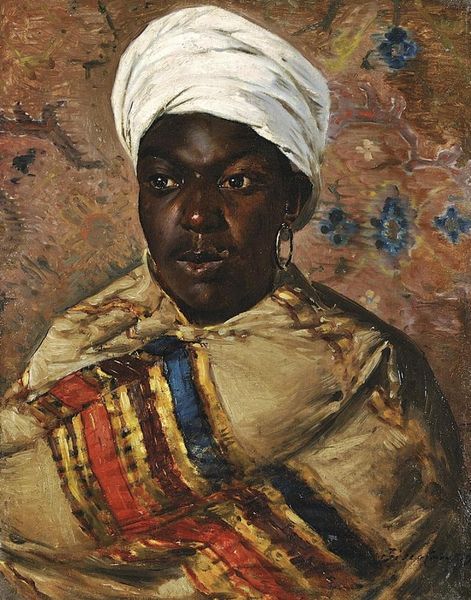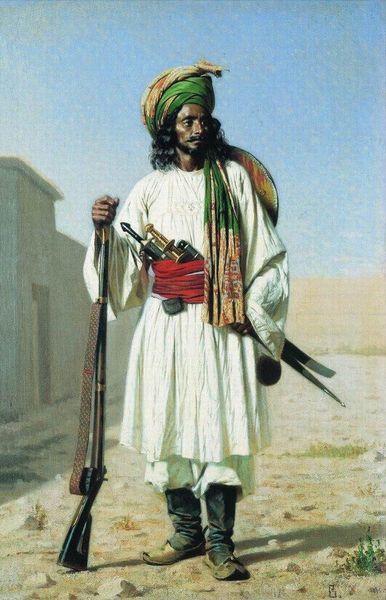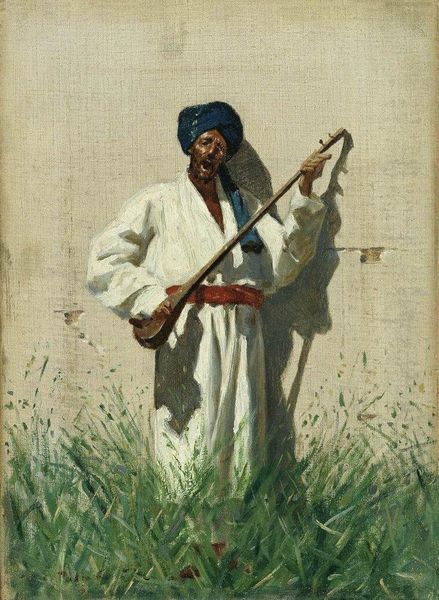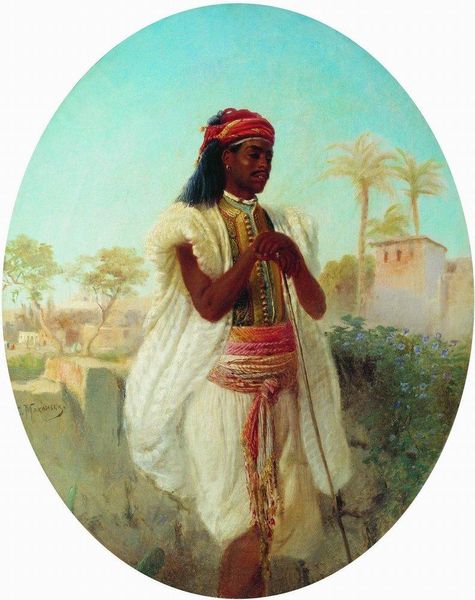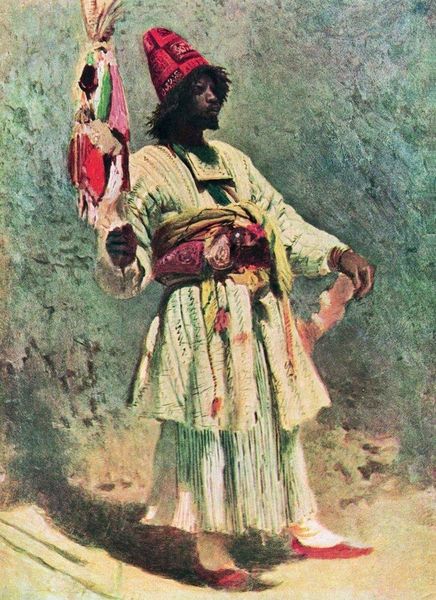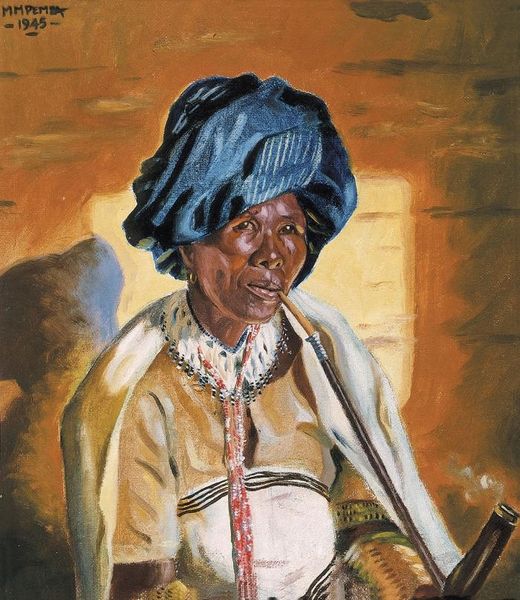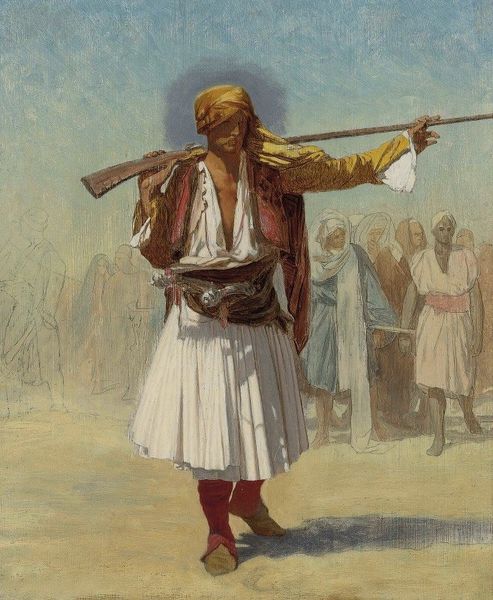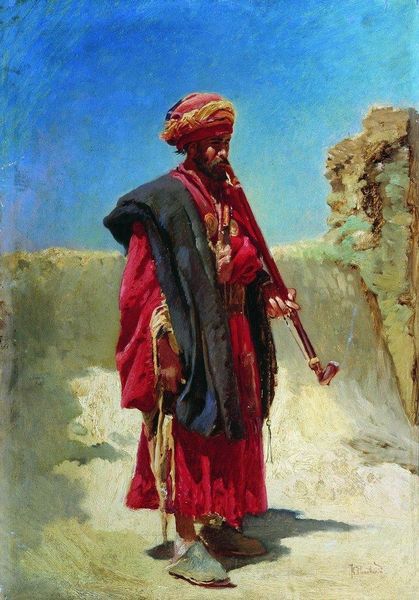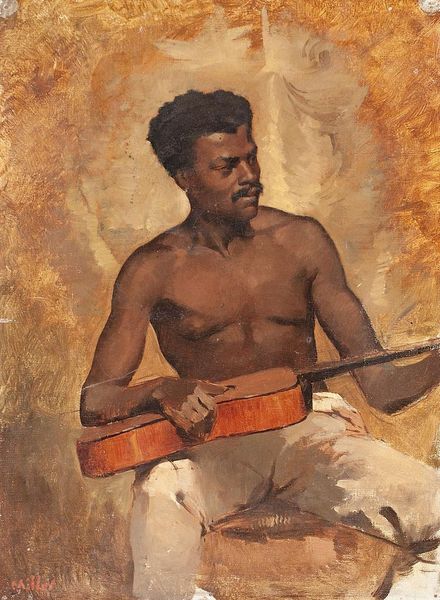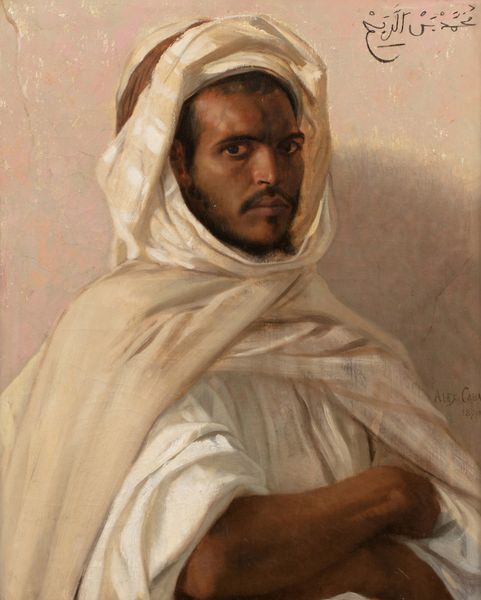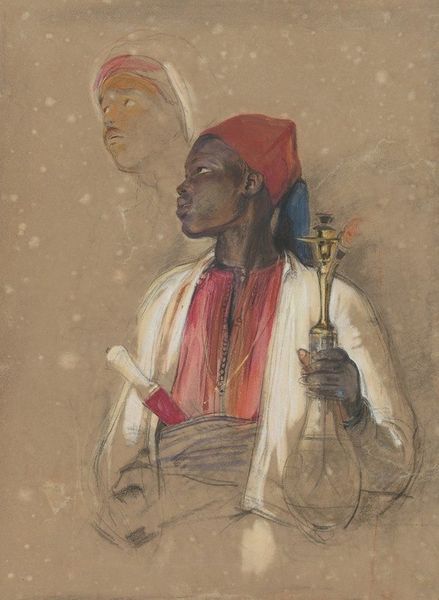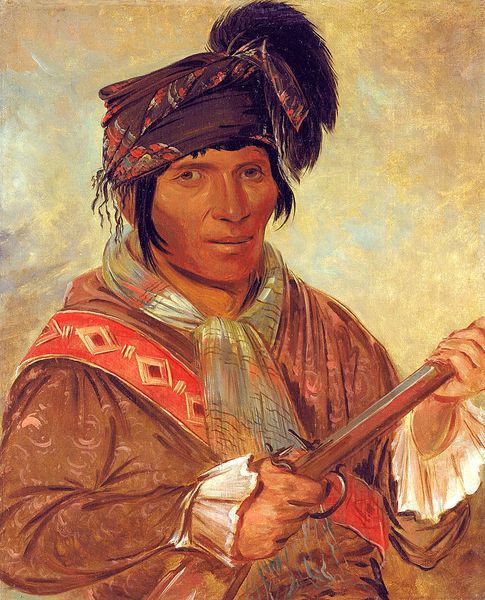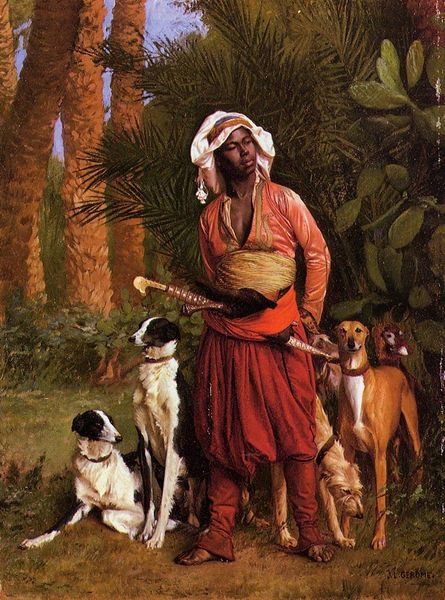
Copyright: Public domain
Curator: This is Konstantin Makovsky's "Egyptian Warrior," painted in 1871. Editor: He's so self-contained. His gaze is direct, unwavering. It feels less like a battle stance and more like quiet pride. What a lovely, dignified painting. Curator: It's a striking example of Orientalism, a genre very popular at the time. It reflected European fascination—or perhaps, more accurately, projection—onto the "East." Makovsky himself travelled extensively. His aim, as he perceived it, was ethnographic accuracy, showing the richness and diversity of other cultures. Editor: Do you buy that as a genuine motive, though? Look at the texture of the shield. It is rendered with a craftsman’s eye for detail. And yet the rest of the painting – that off-white smock against the neutral background, those glints of red near his waist – almost softens into dream. It is gorgeous, but feels filtered through a European lens. It evokes a sense of exotic romance. Curator: Exactly, that tension is what makes these paintings interesting. Makovsky gives us incredible detail—note the spear. And yet, there’s still an element of fantasy at play. What does it mean to portray someone as “exotic” and, essentially, “other”? These were important colonialist narratives playing out on canvas. Editor: I keep coming back to his eyes. Is it the slight upward tilt, the unwavering steadiness, that projects confidence? Or is the light that pools in his irises creating that perception? Makovsky does imbue this figure with considerable presence. Curator: It's complex, isn't it? The technique itself becomes a political statement. Editor: He feels less like a captured trophy, and more like a resister. A beautiful reminder that representation is never passive. Curator: Indeed. The painting invites a conversation, one that continues even now as we look back at these images with contemporary eyes.
Comments
No comments
Be the first to comment and join the conversation on the ultimate creative platform.
